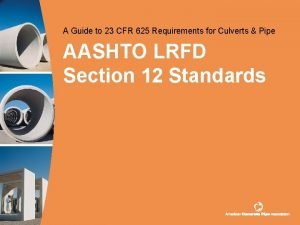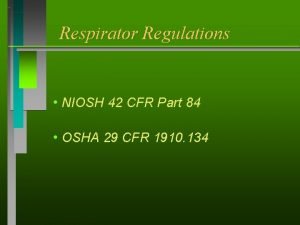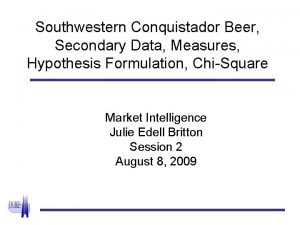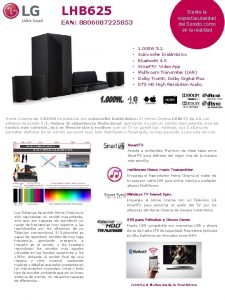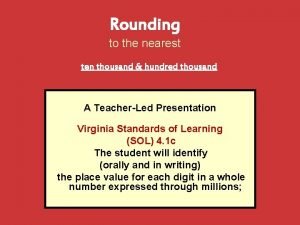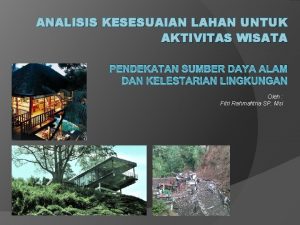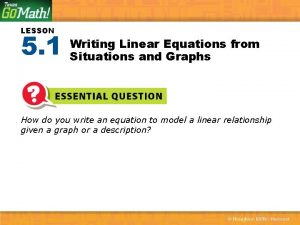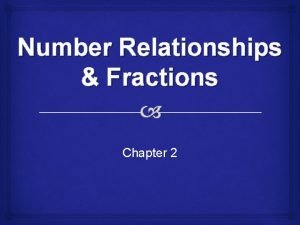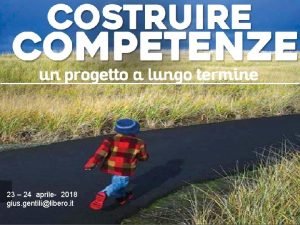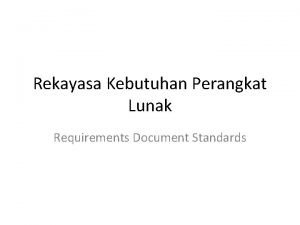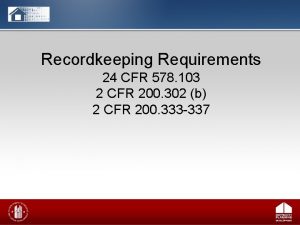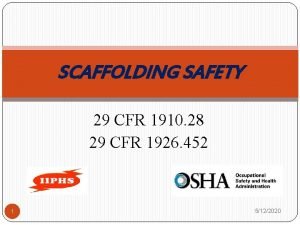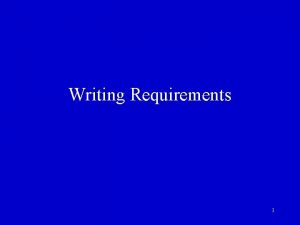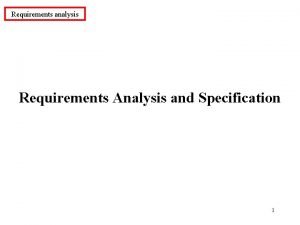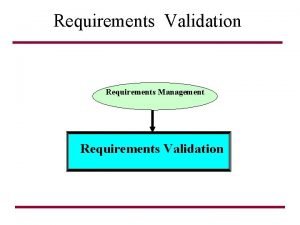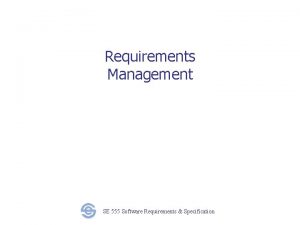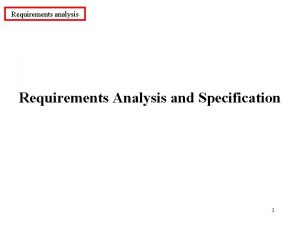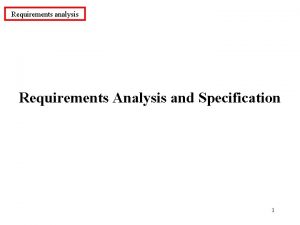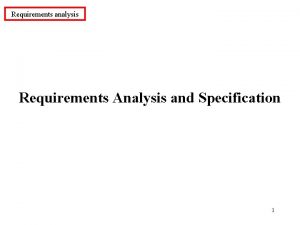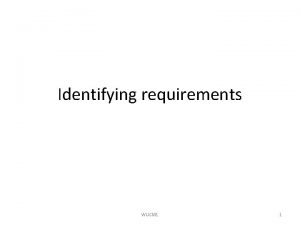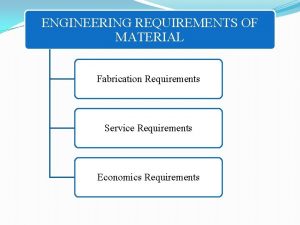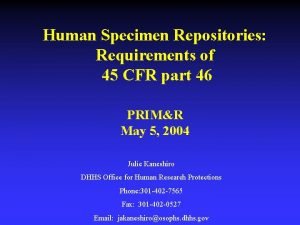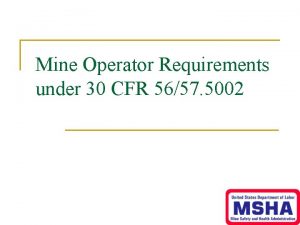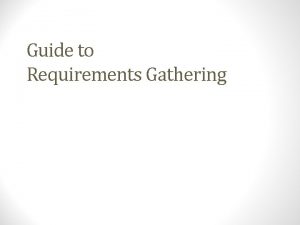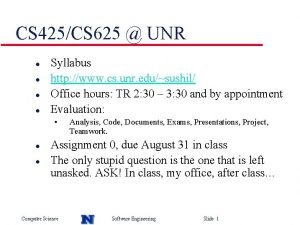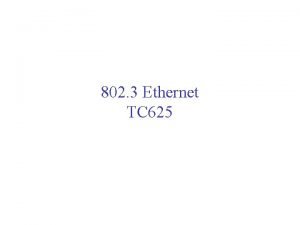A Guide to 23 CFR 625 Requirements for
























































- Slides: 56

A Guide to 23 CFR 625 Requirements for Culverts & Pipe AASHTO LRFD Section 12 Standards


A User’s Guide: 3

4 A User’s Guide • Background: In 2013, following the passage of MAP-21 which contained language granting the states autonomy on the selection of culvert pipe material type, the FHWA issued language addressing the culvert design issue in their Final Rule which was published in the Federal Register on January 28, 2013. In that rule they wrote: “Although section 1525 gives the States the autonomy to determine culvert and storm sewer material types, section 1525 does not relieve the States of compliance with other applicable Federal requirements, such as Buy America, culvert design standards in 23 CFR part 625…”

5 A User’s Guide • 23 CFR 625: Currently, section 23 CFR 625 of the Federal Regulations refers to: “AASHTO LRFD Bridge Design Specifications, 7 th Edition, AASHTO, 2014, with 2015 Interim Revisions” for use in designing buried structures, including culverts. • FHWA July 2016 Email: On July 20, 2016, the FHWA sent an email to all of their district offices reiterating the design requirement.

FHWA Email – July 20, 2016 6

A User’s Guide: AASHTO LRFD Bridge Design Specifications 7 • Section 12 of these specifications covers the designs of concrete pipe, metal pipe and plastic pipe. • Concrete Pipe Designs in Section 12 can be performed using either Indirect or Direct design. § Indirect designs for the pipe can be found in the latest edition of ASTM Specification C-76 “Standard Specification for Reinforced Concrete Culvert, Storm Drain, and Sewer Pipe” and can be used in conjunction with ASTM Specification C-1479 “Standard Practice for Installation of Precast Concrete Sewer, Storm Drain, and Culvert Pipe Using Standard Installations”.

A User’s Guide: AASHTO LRFD Bridge Design Specifications 8 • Plastic and Metal Pipe designs, because they are highly dependent on the soil/pipe envelope for structural strength and support, must be direct designs as soil types and properties are different at virtually all installation locations. • Additionally, plastic pipe designs rely heavily on the pipe wall profile which is different for every pipe manufacturer. • Consequently, the use of typical fill height tables as a substitute for pipe/soil structural design is not valid.

A User’s Guide: Design Notes e. Pipe Design Notes: A series of e. Pipe Design notes have been developed to assist the engineer in some inconclusive areas of the plastic pipe design standard. The standard is silent on the use of trench boxes for construction. As such, without proper research into trench design arching factors, a question arises as to the accuracy of designs using trenches. Additionally, the use of sand backfills, and water table levels and resulting hydrostatic forces on plastic pipe need to be addressed by the designer beyond the guidelines in the specification. e. Pipe Design Notes: • Flexible and Rigid Pipe Installation Review and Discussion • Trust, but Verify • The Importance of the Gradation of Sands With Respect to Structural Backfill Support for Plastic Pipe • Water Table Concerns for Storm Drain and Culverts • Plastic Fill Height Table Pitfalls • Plastic Pipe Profile Predicament Resource # e-022 Resource # e-023 Resource # e-024 Resource # e-025 Resource # e-027 Resource # e-028 9



12 AASHTO Section 12

AASHTO LRFD 13

AASHTO LRFD 14

AASHTO LRFD 15

16 Step 1 - Deflection

17

Plastic Pipe Wall Profiles 18

e. Pipe – The Plastic Pipe Profile Predicament 19 Critical Design Input: • Pipe wall geometry plays an important role in the structural performance of a plastic pipeline. If the engineer allows plastic pipe in the specifications, consideration must be given to the fact that each pipe wall profile is different and requires a unique effective area (Aeff ) for each size of pipe from each individual pipe manufacturer and manufacturing facility. • This data is required (AASHTO LRFD code 12. 3. 10. 1 Resistance to Axial Thrust) and must be accurate in the structural calculations – generic fill height tables will not address all available profile offerings.

Loads on Plastic Pipe 20

21 Loads on Plastic pipe and

Vertical Arching Factor VAF for embankments is usually 0. 4 to 0. 6 22

e. Pipe – Flexible and Rigid Pipe Installation Review and Discussion Critical Design Input: 23 • Depending on the backfill materials used in a trench installation, as well as the width of the trench, lateral support for the pipe, and the relative column strength of the side-fill, soils may not develop to the same extent as assumed when a flexible pipe is installed in an embankment. The vertical load on the side-fill soils is reduced, which then reduces the stiffness of the soil columns as well as the lateral resistance that can be developed in the side-fill soils. • In this condition, the Vertical Arching Factor (VAF) may likely be higher than assumed by equation 12. 3. 5 -3 to the point that it may be more than 1. 0. this means that the flexible pipe may actually see an increase to the soil prism load directly above the pipe compared to the assumed embankment condition, which is not accounted for in current designs.

24 e. Pipe – Flexible and Rigid Pipe Installation Review and Discussion • Until appropriate research is completed to verify the use of embankment VAF as the conservative assumption for all Flexible pipe installations, it is recommended that trench installations not be allowed or at a minimum not receive the benefit from a VAF less than 1. 0 in LRFD calculations. Minimum trench widths should be established to ensure that the installed pipe system meets the assumptions of an embankment.

25 ADS Technical Note – Trench Boxes

26 Constrained Soil Modulus (Ms )

27 Constrained Soil Modulus (Ms )

28 Soil Type Table

29 e. Pipe – The Importance of Gradation of Sands With Respect to Structural Backfill Support for Flexible Pipe • As the AASHTO Section 12 Plastic Pipe Design procedure warns, uniformly graded material with an average particle size smaller than a No. 40 sieve “should not be used as backfill for thermoplastic culverts. ” • If, however, the design engineer allows the use of such material, that decision requires extra precautions during design and installation. • The design engineer must take into consideration the actual moisture content and compaction levels of the chosen backfill material and additionally monitor and measure these factors during construction.

30 Hydrostatic Pressure

Hydrostatic Pressure 31

I-75 Sarasota, FL 2016 32

Common St. - Lake Charles, LA 33

34 Installed and backfilled plastic pipe following rainfall of July 25, 2011:

Lafayette, LA - 2/26/16 35

36 Manufacturer’s Cautions

ADS Technical Note - Flotation 37

38 e. Pipe – Water Table Concerns for Storm Drains and Culverts • The soil-pipe interaction analysis needs to account for the buoyant effect on the pipe and impact on the critical passive soil pressure that a water table has on the soils used in the installation of plastic pipe. • Fluctuations in the water table have a limited effect on rigid concrete pipe since the active lateral earth pressure pushing on the sides of the pipe actually increases when the internal friction in the soil is reduced, and buoyant forces are negligible compared to concrete pipe weight. • Because of this, engineers have become accustomed to using fill height tables without regard to the elevation of the water table.

39 e. Pipe – Water Table Concerns for Storm Drains and Culverts • The buoyant force on a flexible pipe can add between 5% and 20% to the vertical load assumed in the design, thereby increasing the Vertical Arching Factor that is calculated per the current AASHTO LRFD code. • (Note: The loss of side soil support due to migration caused by water table fluctuations can be critical to the structural capacity of flexible pipe and must be considered by the design engineer. ) • Designers default to using manufacturer tables without taking into consideration all of the design caveats.

40 e. Pipe – Plastic Fill Height Table Pitfalls Water Table Impact: • According to AASHTO LRFD Code 12. 3. 7 – Soil Prism, there are three different equations to utilize in design based on the elevation of the top of pipe relative to the elevation of the water table. • Not knowing this exact project variable for each section of a line, the design engineer cannot use the provided manufacturer fill height tables if water tables are present since this variable is not addressed in the tables.

Soil Prism Load 41

42 ADS Technical Note – Fill Height Tables


44 Florida DOT – Fill Height Tables

45 Florida DOT – Fill Height Tables

46 e. Pipe – Plastic Fill Height Table Pitfalls Trench Installations: • A second design omission within the AASHTO LRFD Section 12 code deals with a lack of trench installation investigation. The impact of this lack of investigation is compounded when a trench box is utilized for a particular installation. • A critical component of the structural capacity of the soilplastic pipe system is dependent on the design of the backfill envelope where the side supporting fill must be strong enough to support the horizontal deflection. • When a trench box is utilized and placed within the pipe zone, this all important side fill is dramatically disturbed when the box is moved to the next section. • This action creates voids in this critical haunch and side embedment zone thereby reducing any vertical arching benefit, reducing the soil column strength on each side of the pipe, and subjecting the pipe to strains beyond those allowed by design.

Hydraulic Considerations

48 Hydraulics Reduces Q (flow) by minimum of 4%

49 Coefficients of Thermal Expansion Coefficient (in/in/0 F) PE 8. 0 x 10 -5 PP 4. 2 x 10 -5 PVC 3. 0 x 10 -5 Alum. 1. 3 x 10 -5 Steel 6. 5 x 10 -6 Concrete 5. 5 x 10 -6 Change (in/100 ft/100 F) 0. 96” 0. 52” 0. 36” 0. 16” 0. 08” 0. 07”

50 Thermal Effects • Length change in HDPE § § 1400 F in sun at side of trench pipe installed & backfilled ground temperature 600 F 800 F change = 1. 5” change in length per 20’ section (0. 00008 x 20 x 12 x 80)

Frequency of Crashes Involving Flammable Liquids 51

52 Houston, TX Tanker Fire (I-10 and Hwy. 59) Slide 52

53 Houston, TX Tanker Fire (I-10 and Hwy. 59) Slide 53

54 Houston, TX Tanker Fire (I-10 and Hwy. 59) Slide 54

55 Houston, TX Tanker Fire (I-10 and Hwy. 59) Downstream Manholes Slide 55

56 Liability & Risk • Concrete Pipe: Little or None • Plastic Pipe: § § § No structural design Trench Boxes Flotation Thermal Effects Reduced Hydraulics Fires
 23 cfr 625
23 cfr 625 21 cfr 211 training requirements
21 cfr 211 training requirements Niosh 42 cfr 84 requirements
Niosh 42 cfr 84 requirements Southwestern conquistador beer case solution
Southwestern conquistador beer case solution Lhb 625
Lhb 625 346 to the nearest ten
346 to the nearest ten Hasil dari 0 625 per 0 875 adalah
Hasil dari 0 625 per 0 875 adalah Writing linear equations from situations and graphs
Writing linear equations from situations and graphs 625/100 in simplest form
625/100 in simplest form 4225-625
4225-625 625 south president street
625 south president street Jihlavská 20, 625 00 brno
Jihlavská 20, 625 00 brno How to round to nearest hundred thousand
How to round to nearest hundred thousand Assumptions and dependencies example
Assumptions and dependencies example Jag har nigit för nymånens skära text
Jag har nigit för nymånens skära text Inköpsprocessen steg för steg
Inköpsprocessen steg för steg Påbyggnader för flakfordon
Påbyggnader för flakfordon Strategi för svensk viltförvaltning
Strategi för svensk viltförvaltning A gastrica
A gastrica Standardavvikelse formel
Standardavvikelse formel Typiska novell drag
Typiska novell drag Tack för att ni har lyssnat
Tack för att ni har lyssnat Rutin för avvikelsehantering
Rutin för avvikelsehantering Läkarutlåtande för livränta
Läkarutlåtande för livränta Iso 22301 utbildning
Iso 22301 utbildning Klassificeringsstruktur för kommunala verksamheter
Klassificeringsstruktur för kommunala verksamheter Myndigheten för delaktighet
Myndigheten för delaktighet Tack för att ni lyssnade
Tack för att ni lyssnade Att skriva debattartikel
Att skriva debattartikel Egg för emanuel
Egg för emanuel En lathund för arbete med kontinuitetshantering
En lathund för arbete med kontinuitetshantering Tobinskatten för och nackdelar
Tobinskatten för och nackdelar Atmosfr
Atmosfr Verifikationsplan
Verifikationsplan Var finns arvsanlagen
Var finns arvsanlagen Presentera för publik crossboss
Presentera för publik crossboss Rådet för byggkompetens
Rådet för byggkompetens Kung som dog 1611
Kung som dog 1611 Förklara densitet för barn
Förklara densitet för barn Tack för att ni har lyssnat
Tack för att ni har lyssnat Tack för att ni lyssnade bild
Tack för att ni lyssnade bild Vad är referatmarkeringar
Vad är referatmarkeringar Smärtskolan kunskap för livet
Smärtskolan kunskap för livet Karttecken brunn
Karttecken brunn Luftstrupen för medicinare
Luftstrupen för medicinare Enheter för massa
Enheter för massa Magnetsjukhus
Magnetsjukhus Arkimedes princip formel
Arkimedes princip formel Elektronik för barn
Elektronik för barn Underlag för särskild löneskatt på pensionskostnader
Underlag för särskild löneskatt på pensionskostnader Blomman för dagen drog
Blomman för dagen drog Borra hål för knoppar
Borra hål för knoppar Bris för vuxna
Bris för vuxna Mat för unga idrottare
Mat för unga idrottare Frgar
Frgar Jiddisch
Jiddisch Ledarskapsteorier
Ledarskapsteorier
